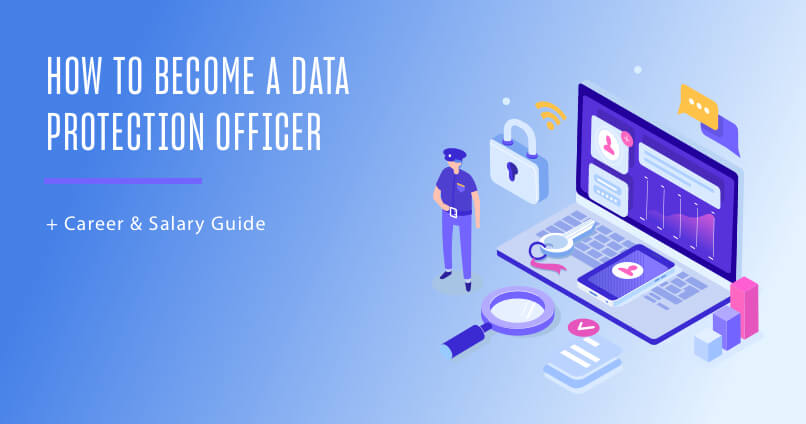As cybersecurity has become a critical component in modern business operations, the role of the Chief Risk Officer (CRO) is more crucial than ever. Organizations across all industries face growing threats and uncertainties, meaning CROs are tasked with identifying, assessing and mitigating risks to protect their company and its assets.
Whether you’re considering a career as a CRO or simply want to understand the growing importance of this position, we’ll explore what CROs do, potential career paths to becoming one and the essential skills and qualifications needed to thrive in this high-stakes role.
What Is a Chief Risk Officer?
Dow Jones defines the Chief Risk Officer as “a C-level executive whose role is to identify and analyze risk to the organization, which includes assessing the likelihood and severity of a threat. A CRO is also responsible for putting people, policies, processes, and technology in place to mitigate risk, protect the organization, and minimize the potential for financial losses.”
We are seeing risks increase for businesses, with many pointing to cyber threats, supply chain issues, economic uncertainty and environmental factors as the leading contributors. This makes the role of the CRO particularly important, especially in industries with high levels of regulation, like finance, or heightened security needs, like healthcare.
Looking forward to 2025, PwC puts the importance of the CRO best: “Today’s CROs need to be agile, strategic and collaborative. They must balance a growing focus on responsible value creation alongside stronger value protection. How? By bringing strategic business insights to help unlock the potential of transformation initiatives with a human-led, tech-enabled approach to risk management.”
What Does a Chief Risk Officer Do?
- Oversee risk management strategies, ensuring compliance with regulations and minimizing operational threats.
- Lead teams in assessing financial, operational, and cyber risks.
- Collaborate with other C-suite executives to create risk prevention strategies.
- Regularly report on risks to stakeholders and implement controls.
The Chief Risk Officer (CRO) plays a pivotal role in safeguarding an organization’s long-term success by overseeing risk management across three primary categories – technical, regulatory and competitive. CROs are part of the C-suite and work collaboratively across the leadership group to develop comprehensive risk prevention strategies. The CRO also implements control measures to protect the company’s assets and reputation while proactively addressing emerging risks.
Some of the most common tasks associated with the CRO role include:
- Overseeing and developing risk management strategies, ensuring compliance with relevant regulations and minimizing operational threats.
- Leading cross-functional teams in assessing and mitigating financial, operational and cyber risks.
- Regularly reporting on risk exposures and mitigation efforts to stakeholders, including the board of directors, investors and regulatory bodies.
Skills and Education
To become a CRO, the top of the career ladder for those working in Enterprise Risk Management (ERM), you will need a wide array of skills, education, experience and more.
| Technical Skills | Risk management, data analysis, cybersecurity knowledge, financial acumen, compliance and regulatory knowledge, crisis management, knowledge of governance and compliance frameworks (COSO, ISO 31000 and Sarbanes-Oxley). |
| Soft Skills | Leadership, strategic thinking, communication, negotiation and decision making. |
| Education | Bachelor’s degree in business, finance or cybersecurity, with suggested Master’s Degree in Cyber Security Operations and Leadership. |
| Certifications | Certified Risk Manager (CRM) or Certified Information Systems Security Professional (CISSP) |
| Years of Experience | At least 10+ years in risk management, finance or cybersecurity fields. |
Career Path and Job Titles
The path to a CRO position isn’t the same for everyone, with many successful Chief Risk Officers coming from a variety of backgrounds. If you were to break down the CRO career path into entry, middle-management and ultimately leadership, the career trajectory typically looks like:
- Entry level: Risk analyst, financial operations, cybersecurity analyst or compliance assistant.
- Middle-management: Risk manager or cybersecurity manager
- Leadership: Chief Compliance Officer (CCO) or Chief Risk Officer (CRO)
Salary and Job Outlook
As you might expect for a C-suite level position, CROs are well compensated. The average salary for a Chief Risk Officer in the United States is $279,311, with the range typically falling between $240,000 and $320,000. While this is a wide spectrum, factors like industry, geographic location and years of experience will usually impact salary figures.
There is an increased demand for CROs, especially as organizations find themselves facing growing cybersecurity risks and compliance requirements. Demand for these roles is projected to increase 17% from 2018 to 2028, faster than the average across all occupations.
4 Steps to Succeed in the Profession
Because CROs are in high demand, you should find many opportunities to break into and find success in this field. And while not all risk management professionals ascend to the level of Chief Risk Officer, here are some steps to help you set yourself up for a rewarding career.
Step 1. Education: Obtain a bachelor’s degree in fields like risk management, finance, cybersecurity or business. A Master’s in Cyber Security Operations and Leadership or an MBA is often recommended for career advancement.
Step 2. Experience: Gain experience through entry-level roles in risk management, compliance or cybersecurity. Internships in these fields are also highly valuable. From there, you can leverage your years of experience, certifications and professional development into a Risk Manager or other leadership role, before working towards CRO.
Step 3. Networking: Build relationships with professionals in risk management, cybersecurity or compliance fields. Consider joining professional associations like the Risk Management Association (RMA) or the International Association of Risk and Compliance Professionals (IARCP).
Step 4. Continuous Learning: Stay informed about new regulations, risk management tools and industry changes through certifications like CRM (Certified Risk Manager), CISSP (Certified Information Systems Security Professional), or ongoing professional development.
The role of a Chief Risk Officer is critical in safeguarding an organization’s assets, reputation and long-term viability by identifying, assessing and mitigating risks across all areas of the business. A successful CRO must possess a strong analytical mindset, strategic thinking and a deep understanding of risk management frameworks, as well as the ability to communicate complex risks to senior leadership and stakeholders.
One of the best ways to set yourself up with the skills and training required to meet those demands is with a master’s degree in Cyber Security Operations and Leadership.
The University of San Diego, a highly regarded industry thought leader and education provider, offers a 100% online master’s program that features all the practical, cutting-edge training required to help you achieve your career goals.





